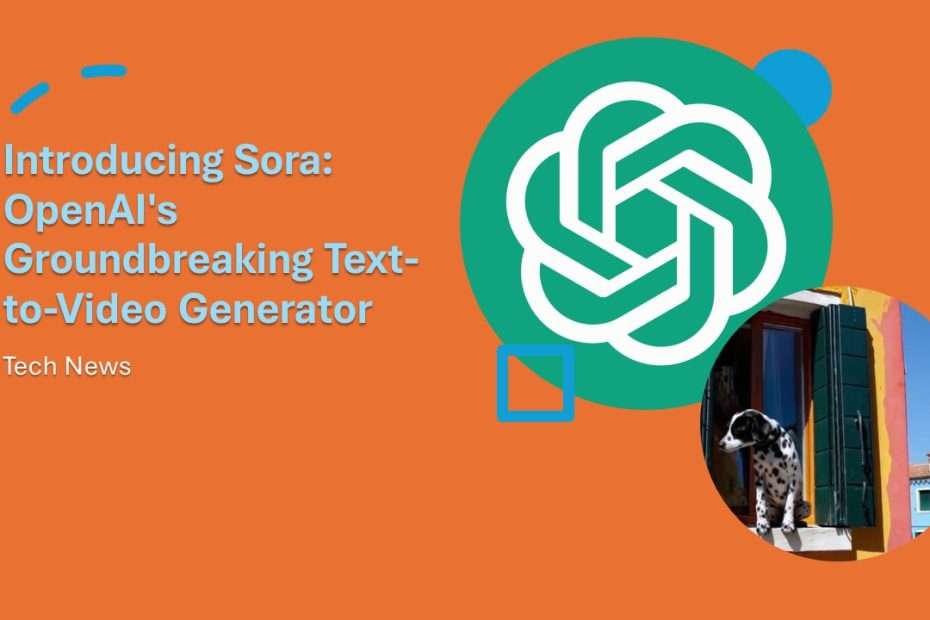OpenAI, the trailblazer in generative artificial intelligence, has recently unveiled its contribution to the text-to-video AI landscape: Sora. This innovative tool is capable of producing remarkably realistic 60-second 1080p clips based on text prompts. Sora stands out for its ability to craft intricate scenes featuring multiple characters, precise motion types, and faithful depiction of both subjects and backgrounds. Notably, OpenAI highlights Sora’s capability to generate multiple shots within a single video, underscoring its versatility and potential for creative storytelling.
In showcasing Sora’s prowess, OpenAI presents a curated selection of examples that demonstrate its convincing output. Among these examples are scenes depicting a woman strolling through Tokyo streets, a Dalmatian gracefully navigating between window ledges, and historical footage capturing the California gold rush. These demonstrations serve to underscore Sora’s proficiency in producing diverse and engaging visual content from mere textual prompts.
Sora, the latest advancement from OpenAI, boasts intriguing capabilities such as extending existing video clips and seamlessly filling in missing frames. Additionally, it offers the flexibility to generate videos in diverse styles, including black and white and animated formats. However, upon closer examination, one might discern telltale signs that the clips are AI-generated, such as discrepancies in the movement of objects or background characters. OpenAI acknowledges that while Sora is impressive, it still faces challenges in accurately simulating physics and comprehending specific cause-and-effect scenarios. Spatial details and precise descriptions of events over time, like following a particular camera trajectory, can also pose difficulties for the current model.
Despite its remarkable features, Sora’s limitations are evident in certain scenarios. Instances where it struggles with nuanced details, such as the aftermath of someone taking a bite from food or accurately portraying complex physical interactions, underscore the ongoing development needed to refine its capabilities further.
Ensuring safety in the development and deployment of technologies like Sora remains a paramount concern for OpenAI. To address this, the company is actively collaborating with experts in various domains, including misinformation, hate speech, and bias, to rigorously test the Sora model. Moreover, OpenAI is proactively building tools, such as a detection classifier, to aid in the identification of potentially misleading content and to discern whether a video has been generated by Sora. Looking ahead, OpenAI has outlined plans to integrate C2PA metadata in future deployments of the model, emphasizing its commitment to implementing robust safety measures.
Sora is here! It's a diffusion transformer that can generate up to a minute of 1080p video with great coherence and quality. @_tim_brooks and I have been working on this at @openai for a year, and we're pumped about pursuing AGI by simulating everything! https://t.co/DzbyReLJEc pic.twitter.com/IFqfh8H6FW
— Bill Peebles (@billpeeb) February 15, 2024
The development of Sora inevitably raises copyright and ethical considerations regarding the data used for its training, a common issue in the realm of advanced technologies. However, OpenAI’s transparency regarding the specifics of the data utilized remains limited. While the company acknowledges employing approximately 10,000 hours of high-quality video in the training process, it provides scant details beyond this, leaving unanswered questions regarding the sources and composition of the training data.
This lack of clarity underscores broader concerns within the AI community regarding data transparency and ethical practices in model development. Without comprehensive information on the datasets used, it becomes challenging to assess potential biases, address ethical implications, and ensure accountability in the deployment of AI technologies like Sora. As such, increased transparency regarding data sourcing and utilization would be beneficial in fostering trust and addressing ethical considerations surrounding the development and implementation of text-to-video generation models.
Prompt: “Several giant wooly mammoths approach treading through a snowy meadow, their long wooly fur lightly blows in the wind as they walk, snow covered trees and dramatic snow capped mountains in the distance, mid afternoon light with wispy clouds and a sun high in the distance… pic.twitter.com/Um5CWI18nS
— OpenAI (@OpenAI) February 15, 2024
Currently, Sora is undergoing a research preview phase and is accessible only to a select group of users for testing purposes. OpenAI has opted not to release it to the public yet, citing concerns about potential misuse. In their efforts to address these concerns, OpenAI plans to engage policymakers, educators, and artists worldwide to gather feedback and identify both positive applications and potential risks associated with this new technology. Despite extensive research and testing, the company acknowledges the unpredictability of how people will utilize the technology, underscoring the importance of ongoing learning from real-world usage to enhance the safety of AI systems over time.
Previous iterations of text-to-video generators like Runaway and Google’s Lumiere have already made their mark. With Sora, a new contender from the creators of ChatGPT and DALL-E, OpenAI enters the arena, prompting interest in how it will compare with existing tools. The competition among these technologies not only drives innovation but also raises questions about the evolution of AI capabilities and the ethical considerations surrounding their deployment.
here is a better one: https://t.co/WJQCMEH9QG pic.twitter.com/oymtmHVmZN
— Sam Altman (@sama) February 15, 2024
OpenAI’s Sora, although not yet accessible to the public at large, has sparked curiosity and engagement through a call for ideas initiated by OpenAI CEO, Sam Altman, on platform X. Altman invited users to propose concepts that could be transformed into videos using Sora’s text-to-video generation capabilities. Several of these user-generated ideas have been featured in the article, offering a glimpse into the creative potential and collaborative nature of Sora’s development process.
Maybe you liked other interesting articles?

